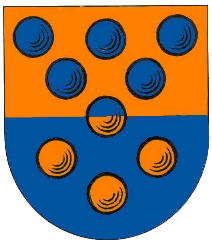Twisteden: Difference between revisions
Jump to navigation
Jump to search
Knorrepoes (talk | contribs) m (Text replace - "'''Origin/meaning :'''<br/>" to "====Origin/meaning====") |
Knorrepoes (talk | contribs) m (Text replace - "|width="15%"|50 px|right |}" to "|width="15%"|50 px|right |}<seo title="Wappen, Gemeindewappen" />") |
||
| Line 3: | Line 3: | ||
|width="70%" align="center" |'''Heraldry of the World<br/>Civic heraldry of [[Germany]] - [[Deutsche Wappen|Deutsche Wappen (Gemeindewappen/Kreiswappen)]]''' | |width="70%" align="center" |'''Heraldry of the World<br/>Civic heraldry of [[Germany]] - [[Deutsche Wappen|Deutsche Wappen (Gemeindewappen/Kreiswappen)]]''' | ||
|width="15%"|[[File:Germany.jpg|50 px|right]] | |width="15%"|[[File:Germany.jpg|50 px|right]] | ||
|} | |}<seo title="Wappen, Gemeindewappen" /> | ||
Revision as of 18:44, 5 November 2012
| Heraldry of the World Civic heraldry of Germany - Deutsche Wappen (Gemeindewappen/Kreiswappen) |
TWISTEDEN
State : Nordrhein-Westfalen
District (Kreis) : Kleve (until 1974 Geldern)
Incorporated into : 1969 Kevelaer
Origin/meaning
The arms were officially granted on ??
The nine balls are the symbol of the local patron saint, St. Quirinus. The number nine is derived from the Latin name of the city of Neuss, Novesia. The parish of Twisteden was established by a monastery in Neuss. The number nine in Latin is novem, hence the nine balls for the link with Novesia.
The division of the shield symbolises the name of the town, which is derived from 'two-steads', namely the villages Heuvens and Huxen.
Literature : Information obtained from Joachim Beeck, Meerbusch.

